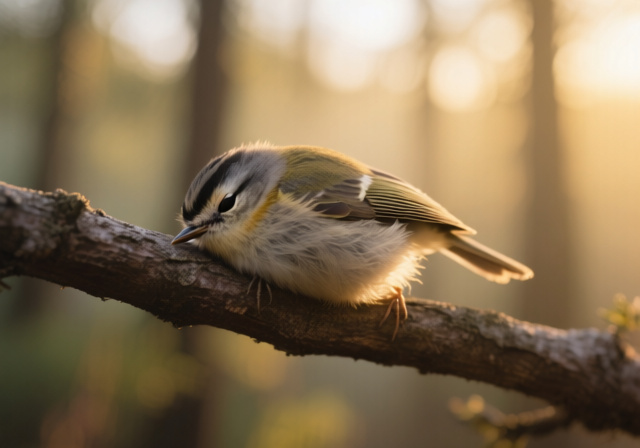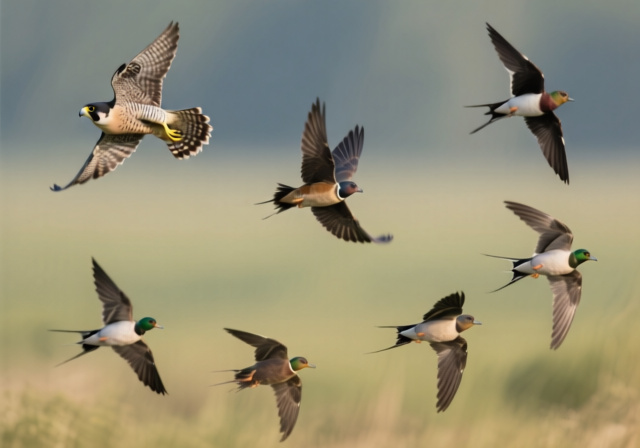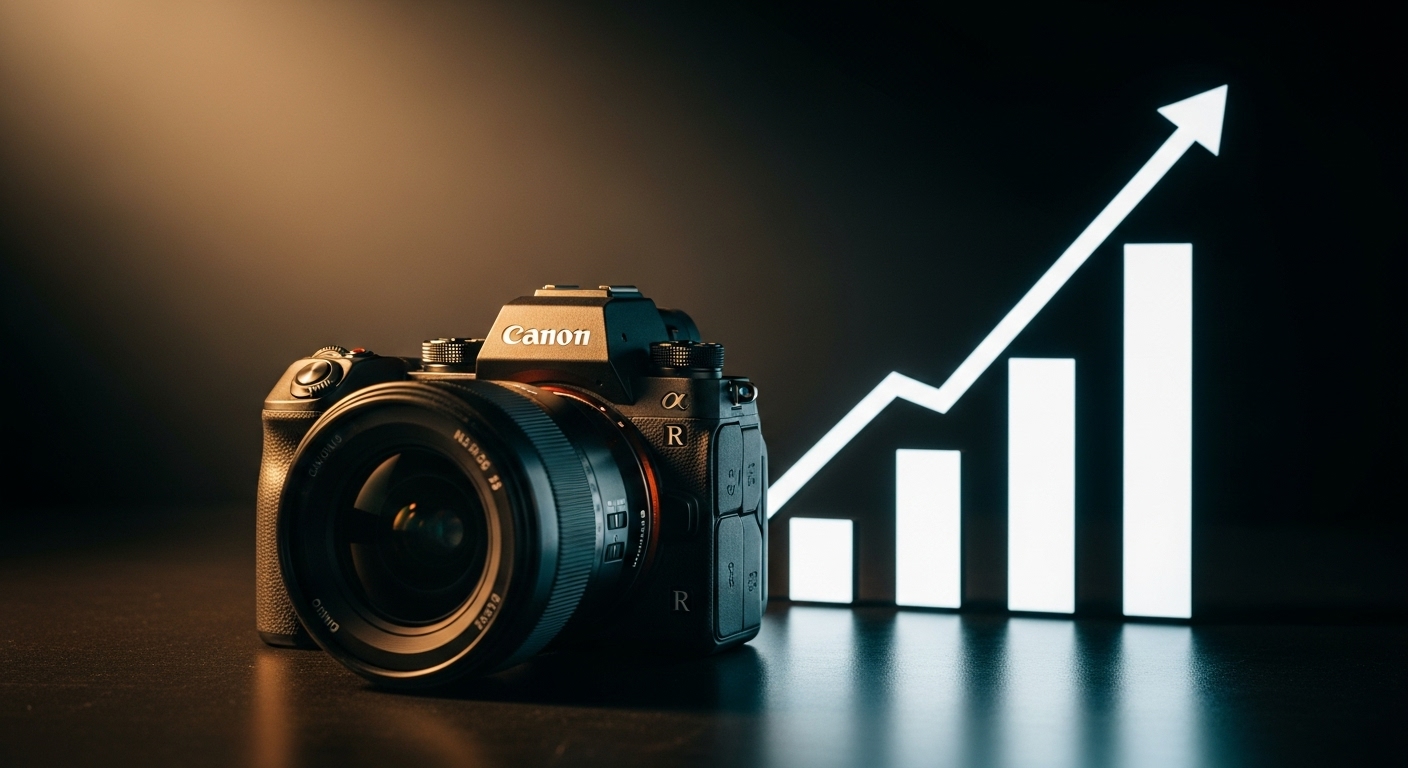



Have you ever watched a bird streak across the sky and wondered just how fast it was flying? I’ve spent countless hours in the field trying to capture these incredible creatures through my camera lens, and their speed never ceases to amaze me.
Birds fly at dramatically different speeds depending on the species and situation. Most birds cruise at 20-30 mph (32-48 km/h) during normal flight, but speed champions like the peregrine falcon can reach over 240 mph (386 km/h) when diving.
As a wildlife photographer, understanding bird flight speeds isn’t just fascinating trivia—it’s essential knowledge. Knowing whether you’re dealing with a 20 mph songbird or a 100 mph raptor completely changes your camera settings and approach. In this guide, I’ll share everything I’ve learned about bird flight speeds, including how this knowledge can improve your photography and field observations.
Whether you’re a photographer trying to capture that perfect shot, a bird watcher looking to identify species by their flight patterns, or simply curious about nature’s avian speedsters, this comprehensive guide will give you all the information you need.
Before diving into specific species and their incredible speeds, it’s crucial to understand that “bird speed” isn’t a single measurement. Scientists and bird enthusiasts use several different speed measurements, each telling a different story about how birds fly.
Cruising Speed: The normal, sustained speed birds maintain during regular flight, typically 20-30 mph for most species.
Level flight speed refers to horizontal flight without diving or climbing—this is how we compare most birds’ flying abilities. Diving speed, used by predatory birds like falcons, represents gravity-assisted hunting dives that can reach breathtaking velocities.
The difference between air speed (speed relative to air) and ground speed (speed relative to ground) matters too. A bird flying 30 mph against a 20 mph headwind only achieves 10 mph ground speed, making wind conditions crucial for understanding actual flight capabilities.
Measurement methods have evolved dramatically. Early researchers used stopwatches and marked distances, while modern techniques include radar tracking, GPS loggers, and high-speed video analysis. This technology has given us incredibly accurate speed measurements, though some historical records remain debated in the ornithology community.
Not all birds are created equal when it comes to speed. Flight speed correlates strongly with body size, wing shape, and lifestyle. Here’s how different bird categories typically perform in the air:
Small Songbirds: Most small birds like sparrows, finches, and warblers cruise at 15-25 mph (24-40 km/h). Their short, rounded wings prioritize maneuverability over speed, helping them navigate through foliage and escape predators. I’ve found these challenging subjects—they’re quick but erratic, requiring fast autofocus systems.
Medium Birds: Crows, pigeons, and similar-sized birds typically fly at 25-35 mph (40-56 km/h). Their balanced wing design allows for efficient cruising with good maneuverability. These make excellent practice subjects for aspiring bird photographers.
Waterfowl: Ducks and geese usually cruise at 40-55 mph (64-88 km/h), with some species reaching higher speeds during migration. Their powerful flight muscles and strong wings enable long-distance travel, often in impressive V-formations that reduce individual energy expenditure.
Birds of Prey: Raptors vary widely—eagles cruise at 30-40 mph (48-64 km/h), while falcons can exceed 60 mph (97 km/h) in level flight. Their speed depends on hunting strategy, with some prioritizing soaring and others high-speed pursuit.
⚠️ Important: Remember that these are cruising speeds. Most birds can burst 50-100% faster when escaping predators or catching prey.
While average birds are impressive enough, some species take flight speed to extraordinary levels. These speed champions have evolved specialized adaptations that make them the Formula 1 cars of the avian world.
1. Peregrine Falcon – 240 mph (386 km/h) diving
The undisputed king of speed, the peregrine falcon holds the title of fastest animal on Earth. During their characteristic hunting stoop, these raptors reach speeds that would rip apart lesser creatures. Their specialized nostrils, tubular nasal passages, and powerful pectoral muscles make these high-speed dives possible. For photographers, capturing a stooping peregrine represents the ultimate challenge—they go from horizon to target in literally seconds.
2. White-Throated Needletail – 105 mph (169 km/h)
This swift holds the record for fastest level flight, meaning horizontal flight without diving. Found across Asia and Australia, needletails spend almost their entire lives on the wing, even sleeping while flying. Their swept-back wings and streamlined bodies are built for pure speed. I’ve only photographed these once during migration, and keeping them in frame felt like trying to track a missile.
3. Common Swift – 69.3 mph (111.5 km/h)
The fastest confirmed level flight speed belongs to the common swift, a bird that can spend up to 10 months continuously airborne without landing. Their forked tails and sickle-shaped wings provide both speed and incredible maneuverability. In Europe, photographers gather at specific locations during migration to attempt shots of these avian acrobats.
4. Frigatebird – 95 mph (153 km/h)
With the largest wingspan-to-body-weight ratio of any bird, frigatebirds are masters of efficient speed. They can stay aloft for months, riding atmospheric currents and reaching impressive speeds when needed. Their piratical behavior—stealing food from other birds in mid-air—requires both speed and aerial agility.
5. Eurasian Hobby – 99 mph (160 km/h)
This small falcon combines speed with incredible aerial skill, often catching dragonflies and swallows in flight. Their short, powerful wings allow for rapid acceleration and tight turns at high speed. I once watched a hobby hunt at dusk, and the display of speed and precision was simply breathtaking.
6. Spur-Winged Goose – 88 mph (142 km/h)
Surprisingly, Africa’s largest waterfowl is also one of the fastest. Despite their size, these geese can outrun many smaller birds. Their powerful wings and robust flight muscles enable both speed and endurance, making them formidable subjects for African wildlife photographers.
7. Red-Breasted Merganser – 81 mph (130 km/h)
This diving duck holds the record for fastest horizontal flight among waterfowl. Their streamlined bodies and rapid wingbeats make them challenging photography subjects, especially when they’re escaping predators across the water’s surface.
8. Grey-Headed Albatross – 79 mph (127 km/h)
Using a technique called dynamic soaring, albatrosses can maintain high speeds for hours with minimal effort. They harness wind gradients over ocean waves, essentially surfing the wind. Their 7-foot wingspans and mastery of oceanic winds make them the marathon runners of the speed world.
| Bird Species | Max Speed (mph) | Max Speed (km/h) | Flight Type | Notes |
|---|---|---|---|---|
| Peregrine Falcon | 240 mph | 386 km/h | Diving | Fastest animal on Earth |
| White-Throated Needletail | 105 mph | 169 km/h | Level flight | Fastest confirmed level flight |
| Common Swift | 69.3 mph | 111.5 km/h | Level flight | 10 months continuous flight possible |
| Frigatebird | 95 mph | 153 km/h | Level flight | Largest wingspan-to-weight ratio |
| Eurasian Hobby | 99 mph | 160 km/h | Level flight | Acrobatic insect hunter |
The peregrine falcon deserves special attention for its remarkable speed capabilities. What makes this bird so incredibly fast? It’s a combination of evolutionary engineering that reads like a high-performance aircraft design.
During a hunting stoop, peregrines fold their wings back, reducing drag and transforming their body into a teardrop-shaped projectile. They can accelerate from 0 to 60 mph in less than 3 seconds—faster than most sports cars. But speed isn’t their only adaptation.
Specialized bony tubercles in their nostrils act as baffles, allowing them to breathe at high speeds without damaging their lungs. Their eyes have a specialized nictitating membrane that acts like goggles, clearing debris and maintaining vision during 200+ mph dives. Third eyelid—nature’s answer to high-speed flight challenges.
For photographers, peregrines present unique challenges. I recommend using shutter speeds of at least 1/4000s when attempting to capture these birds. Even then, you’ll need to anticipate their flight path—by the time you see them in your viewfinder, they may already be out of frame. Many wildlife photographers specialize in peregrines precisely because of these technical challenges.
✅ Pro Tip: When photographing diving falcons, focus on their intended target rather than the bird itself. Use continuous autofocus with high burst rates to capture the split-second strike.
Bird flight speed results from a complex interplay of anatomical, environmental, and behavioral factors. Understanding these elements not only satisfies scientific curiosity but also helps photographers predict bird behavior and prepare their equipment accordingly.
Wing shape stands as perhaps the most critical factor determining flight speed. Long, pointed wings like those found in swifts and falcons minimize drag and maximize speed, ideal for open-country flyers. In contrast, short, rounded wings provide superior maneuverability in forested environments but limit top speed.
Body mass plays a surprising role. Heavier birds generally fly faster due to their greater momentum, but they require more power to achieve flight. This explains why tiny hummingbirds can hover but achieve relatively low forward speeds, while large albatrosses cover vast distances with minimal effort.
Hollow bones reduce weight without sacrificing strength—a crucial adaptation for flight. Combined with powerful pectoral muscles that can account for up to 35% of a bird’s body weight, these adaptations enable the power-to-weight ratios necessary for high-speed flight.
Wind conditions dramatically affect bird flight speed. A strong tailwind can boost a bird’s ground speed by 50% or more, while headwinds can slow progress to a crawl. Experienced bird watchers know that the best days for observing migration often follow weather fronts when favorable winds assist travel.
Air temperature and altitude also matter. Cold, dense air provides more lift, allowing birds to fly more efficiently. This is why many birds migrate at higher altitudes where air is thinner but offers less resistance. Bar-tailed godwits, for example, fly at altitudes up to 20,000 feet during their non-stop 7,000-mile migrations.
Birds adjust their speed based on purpose. Migration requires efficient cruising speeds that balance distance covered with energy conservation. Escaping predators triggers maximum burst speed regardless of energy cost. Hunting may require either sustained pursuit speeds or explosive acceleration depending on prey type.
I’ve observed this flexibility countless times in the field. A flock of geese migrating at 40 mph will suddenly explode at 60+ mph when an eagle appears. A peregrine falcon cruising lazily at 30 mph can instantly accelerate to 200+ mph when it spots prey. This behavioral adaptability makes birds such compelling subjects for wildlife photography.
Capturing sharp images of fast-flying birds represents one of photography’s greatest challenges. Based on my experience photographing everything from hummingbirds to falcons, here’s what you need to know to succeed.
The right gear makes all the difference when photographing birds in flight. For serious bird photography, I recommend at least a 300mm telephoto lens, though 400-600mm provides better reach for most situations. Modern mirrorless cameras with advanced autofocus systems have revolutionized bird photography—their subject tracking and eye detection capabilities make keeping fast birds in focus dramatically easier.
For bird watching before photography sessions, I always carry my compact binoculars for birding. The 8×32 configuration provides an excellent balance between magnification and field of view, allowing me to track fast-moving birds and predict their flight paths. Understanding binocular magnification for birds helps you choose optics that complement your photography workflow.
Sometimes, binoculars alone aren’t enough for distant subjects. In these cases, spotting scopes for bird photography provide the extra reach needed to identify distant raptors or waterfowl before attempting photography. The choice between angled and straight scopes affects usability—angled models work better when observing birds in flight at different heights, while straight scopes excel at horizontal tracking.
Shutter speed is your most critical setting. For birds in flight, I use a minimum of 1/2000s, but faster birds require 1/4000s or even 1/8000s to freeze motion completely. High ISO performance is crucial—don’t be afraid to push ISO to 1600-3200 if needed to maintain fast shutter speeds.
Autofocus mode should be set to continuous (AI Servo for Canon, AF-C for Nikon/Sony) with expanded focus area. Modern cameras with animal eye detection are game-changers for bird photography. Back-button focus—assigning autofocus to a button on the back of your camera rather than the shutter button—gives more control over tracking moving subjects.
Burst rate matters less than you might think. While 10+ frames per second sounds impressive, technique matters more. I prefer short, controlled bursts of 3-5 frames timed to the bird’s flight path rather than holding down the shutter button and hoping for the best.
⏰ Time Saver: Practice on common, slower birds like pigeons or gulls before attempting fast subjects. Building your technique on easier targets saves frustration when rare opportunities arise.
The best equipment won’t help without proper technique. Anticipation is key—learn bird flight patterns and habits. Many birds follow predictable routes when flying between feeding and resting areas. Position yourself with good light and clean backgrounds before the birds arrive.
Panning with the bird creates a sense of motion while keeping the subject sharp. Use slower shutter speeds (1/250-1/500s) for artistic motion blur backgrounds, or faster speeds for completely frozen action. Your panning technique should be smooth—practice following cars or other moving objects to perfect your motion.
For low-light birding at dawn or dusk when many birds are most active, specialized optics for birding at dusk can help you locate subjects before photography begins. These instruments gather more light, extending your observation time in challenging lighting conditions.
Flight characteristics often provide crucial identification clues, especially for distant birds. With practice, you can identify many species by their speed, wingbeat pattern, and flight style alone.
Speed ranges offer the first clue. A bird flying steadily at 40 mph is likely a duck or goose. Something zipping by at 60+ mph could be a falcon or swift. Even without precise measurement, relative speed helps narrow possibilities.
Wingbeat patterns provide additional information. Continuous, rapid wingbeats suggest small birds like swallows or swifts. Slow, powerful flaps indicate large birds like eagles or herons. Soaring birds with occasional wing adjustments include hawks, vultures, and albatrosses.
Flight style completes the picture. Direct, purposeful flight often indicates migration. Erratic, bouncing flight might reveal a woodpecker or finch. Diving attacks characterize raptors like falcons and ospreys. By combining these elements with size and silhouette, experienced birders can identify many species without ever seeing field marks clearly.
Most normal birds cruise at 20-30 mph (32-48 km/h) during regular flight. Small songbirds typically fly slower at 15-25 mph, while larger birds like ducks and geese cruise at 40-55 mph. However, all birds can fly 50-100% faster when escaping predators or during other high-energy situations.
Several birds can exceed 100 mph in level flight: the white-throated needletail swift at 105 mph, the frigatebird at 95 mph, the Eurasian hobby at 99 mph, and the spur-winged goose at 88 mph. The peregrine falcon can reach over 200 mph, but only during its characteristic hunting dive, not in level flight.
The peregrine falcon is the fastest bird and fastest animal on Earth, reaching speeds up to 240 mph (386 km/h) during its hunting dive called a stoop. In level flight (horizontal without diving), the white-throated needletail holds the record at 105 mph (169 km/h).
Yes, some birds can sleep while flying. Species like swifts, frigatebirds, and albatrosses use unihemispheric slow-wave sleep, where one brain hemisphere remains awake while the other sleeps. This allows them to rest during long migrations or extended periods at sea. Frigatebirds can sleep for brief periods while soaring on air currents.
Migration speeds vary by species but typically range from 15-55 mph (24-88 km/h). Small songbirds often migrate at 20-30 mph, while larger birds like geese and ducks may travel at 40-55 mph. Wind conditions significantly affect migration speed—a strong tailwind can increase ground speed by 50% or more.
Several birds can reach or exceed 70 mph: the canvasback duck at 73 mph, the mallard at 65 mph, and Anna’s hummingbird can reach 61 mph during courtship dives. The red-breasted merganser can fly at 81 mph in level flight, making it one of the fastest waterfowl.
No bird can fly 300 mph in level flight. The peregrine falcon comes closest with diving speeds up to 240 mph (386 km/h). Some historical claims of birds reaching 300+ mph exist but lack scientific verification. Modern measurement techniques have confirmed that 240 mph represents the current maximum verified speed for any bird.
Yes, birds do get tired, but they have incredible endurance adaptations. Many can fly for days or even months without stopping. The common swift can fly for 10 months continuously, and bar-tailed godwits make non-stop 7,000-mile flights. Birds use energy-efficient flight patterns, following favorable winds and resting on the wing when possible.
Understanding bird flight speeds opens up a new dimension of appreciation for these incredible creatures. Whether you’re tracking a 200 mph peregrine dive or watching a flock of geese migrate at 40 mph, each speed represents an evolutionary solution to specific ecological challenges.
For photographers, speed knowledge translates directly to better images. I’ve learned that knowing a subject’s typical speed helps me choose the right shutter speed, predict movement patterns, and position myself for the best shots. When choosing binocular size for birding, consider how you’ll use them—smaller 8×32 models excel at tracking fast birds due to their wider field of view.
Remember that the best bird experiences come from combining knowledge with patience. Spend time observing local birds to learn their typical speeds and patterns. This foundation will serve you well whether you’re photographing rare visitors or simply enjoying the daily show at your backyard feeder.
For those serious about bird observation and photography, investing in quality optics pays dividends. Whether you choose affordable birding binoculars or premium models, the key is understanding their capabilities and matching them to your needs. The right equipment, combined with knowledge of bird behavior and speed, will dramatically enhance your outdoor experiences.
Next time you see a bird streak across the sky, take a moment to appreciate the incredible evolutionary engineering that makes such speed possible. And if you’re feeling inspired to capture these moments yourself, remember that every professional bird photographer started exactly where you are—with curiosity and a desire to connect with nature through the lens.







